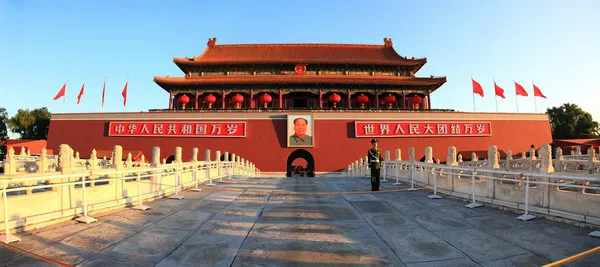Asia, the largest continent on Earth, is home to a diverse array of cultures, landscapes, and peoples. Within its vast expanse, there are several countries that stand out for their sheer size and influence on the global stage. In this article, we delve into the three largest countries in Asia, exploring their geographical features, cultural heritage, and economic significance.
3 Largest Countries in Asia
1. Russia
Geographical Overview
Spanning two continents, Europe and Asia, Russia is the largest country in the world by land area. With a total area of over 17 million square kilometers, it encompasses a wide range of landscapes, including vast plains, dense forests, and rugged mountains. The country is bordered by 14 countries and is home to a diverse array of ecosystems, from the frozen tundra of Siberia to the subtropical forests of the Caucasus.
Cultural Heritage
Russia has a rich and storied cultural heritage that spans centuries. From the grandeur of Moscow’s Kremlin to the opulence of St. Petersburg’s Hermitage Museum, the country is home to numerous architectural marvels and artistic treasures. Russian literature, music, and dance have also made significant contributions to world culture, with iconic figures such as Leo Tolstoy, Fyodor Dostoevsky, and Pyotr Ilyich Tchaikovsky leaving an indelible mark on the world stage.
Economic Significance
As one of the world’s largest economies, Russia plays a critical role in global affairs. The country is rich in natural resources, including oil, natural gas, and minerals, making it a major player in the global energy market. Additionally, Russia is a leading producer of commodities such as wheat, barley, and sunflower seeds, contributing to its status as a key player in the global agricultural industry.
Despite its economic prowess, Russia faces numerous challenges, including political instability, corruption, and economic sanctions imposed by Western countries. However, with its vast reserves of natural resources and strategic geographic position, Russia is poised to remain a major player on the world stage for years to come.
2. China
Geographical Overview
With a land area of over 9.5 million square kilometers, China is the second-largest country in Asia and the fourth-largest in the world. Situated in East Asia, it is bordered by 14 countries and boasts a diverse range of landscapes, including towering mountains, fertile plains, and arid deserts. The country is also home to some of the world’s most iconic natural landmarks, such as the Yangtze River, the Great Wall of China, and the karst landscapes of Guilin.
Cultural Heritage
China has a rich and ancient cultural heritage that dates back thousands of years. From the teachings of Confucius to the art of calligraphy and porcelain making, the country has made significant contributions to world culture. Chinese cuisine, with its diverse flavors and regional variations, is renowned around the world, while traditional Chinese medicine and martial arts continue to attract practitioners and enthusiasts from across the globe.
Economic Significance
As the world’s second-largest economy, China plays a central role in global trade and commerce. The country is a major exporter of manufactured goods, electronics, and textiles, and is the world’s largest importer of commodities such as crude oil, iron ore, and soybeans. China’s rapid economic growth over the past few decades has lifted millions of people out of poverty and transformed it into a global economic powerhouse.
Despite its economic success, China faces numerous challenges, including environmental degradation, income inequality, and political repression. However, with its vast population, burgeoning middle class, and ambitious development goals, China is poised to remain a dominant force in the global economy for the foreseeable future.
3. India
Geographical Overview
Located in South Asia, India is the seventh-largest country in the world by land area, covering over 3.2 million square kilometers. The country is bordered by Pakistan, China, Nepal, Bhutan, Bangladesh, and Myanmar, and boasts a diverse range of landscapes, including the Himalayan mountain range, the fertile plains of the Ganges River, and the arid deserts of Rajasthan. India is also home to a rich array of biodiversity, with thousands of species of plants and animals found nowhere else on Earth.
Cultural Heritage
India has a rich and vibrant cultural heritage that spans thousands of years. From the ancient civilizations of the Indus Valley to the Mughal Empire and the British Raj, the country has been shaped by a myriad of influences and traditions. Indian cuisine, with its diverse flavors and regional variations, is celebrated around the world, while classical Indian music, dance, and literature continue to captivate audiences both at home and abroad.
Economic Significance
As one of the world’s fastest-growing economies, India plays a crucial role in global trade and commerce. The country is a major exporter of textiles, pharmaceuticals, and information technology services, and is home to some of the world’s largest companies, including Tata Group, Reliance Industries, and Infosys. India’s young and dynamic population, coupled with its growing middle class and expanding consumer market, make it an attractive destination for foreign investors and multinational corporations.
Despite its economic potential, India faces numerous challenges, including poverty, unemployment, and infrastructure deficits. However, with its democratic institutions, entrepreneurial spirit, and rich cultural heritage, India is well-positioned to overcome these obstacles and emerge as a global economic powerhouse in the 21st century.
See Also: America’s Top 5 Most Philanthropic Billionaires
A Quick Review
The three largest countries in Asia, Russia, China, and India, are as diverse and complex as the continent itself. From the icy expanses of Siberia to the bustling streets of Beijing and the vibrant markets of Mumbai, these countries are home to a rich tapestry of cultures, landscapes, and peoples. While each faces its own unique set of challenges, they share a common resilience and determination to forge a brighter future for themselves and the world. As we continue to explore and appreciate the wonders of Asia, let us marvel at the diversity and strength of its largest countries, and the contributions they make to our shared global community.
You Might Be Interested In:
























